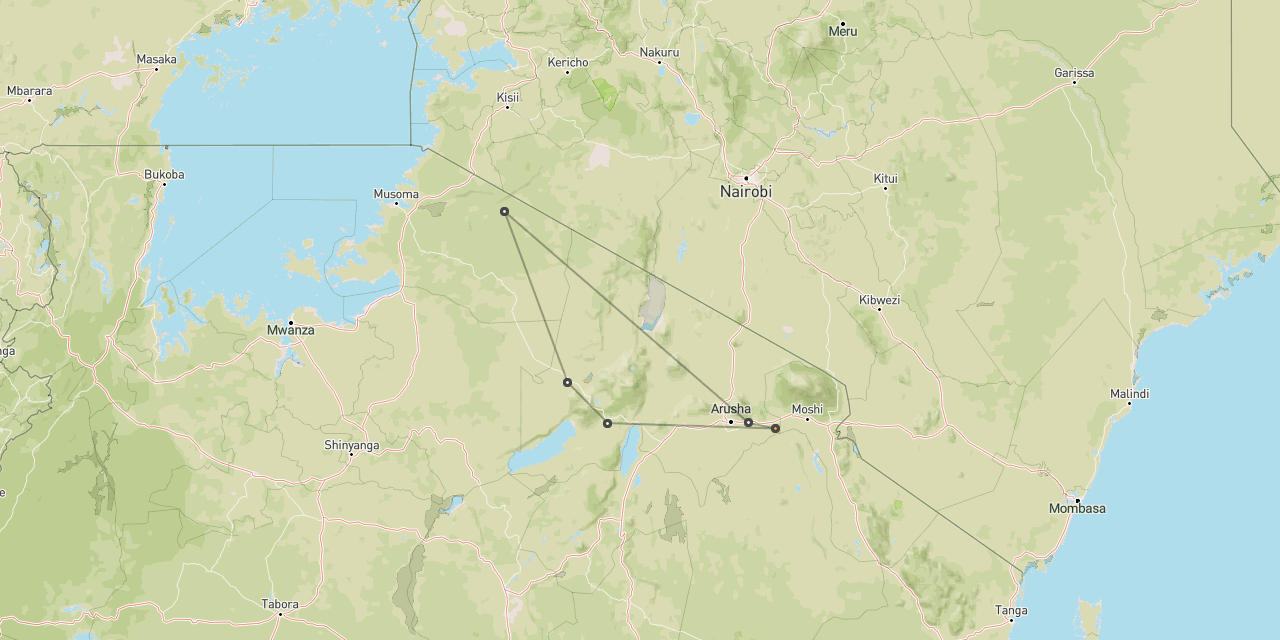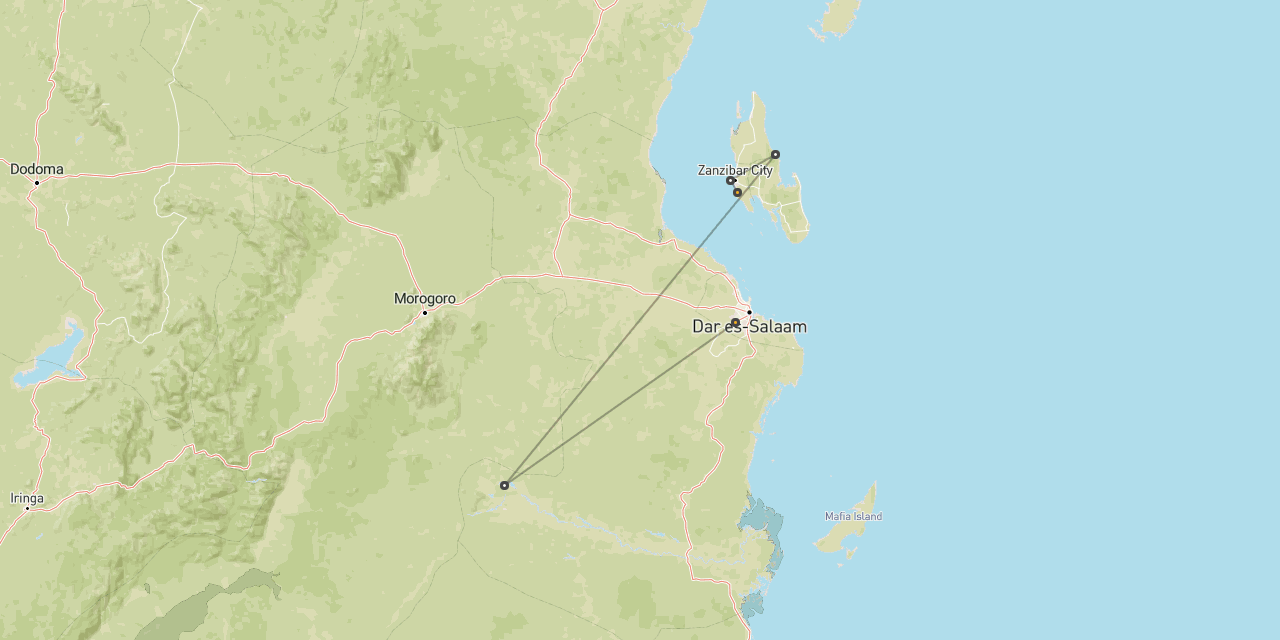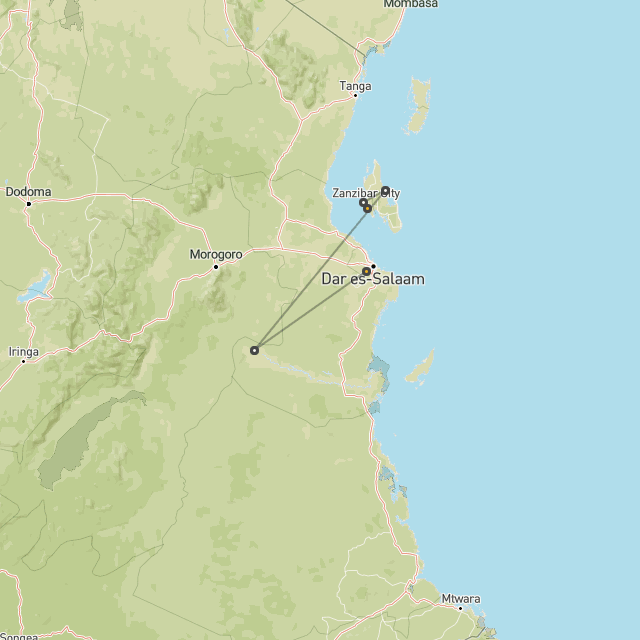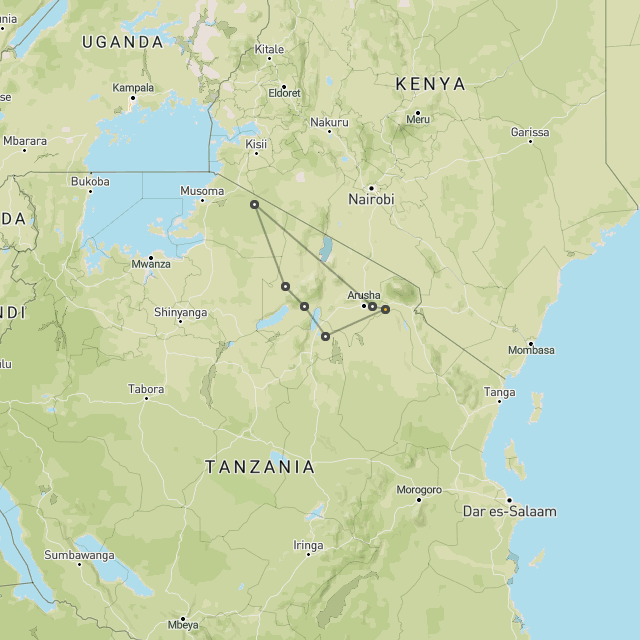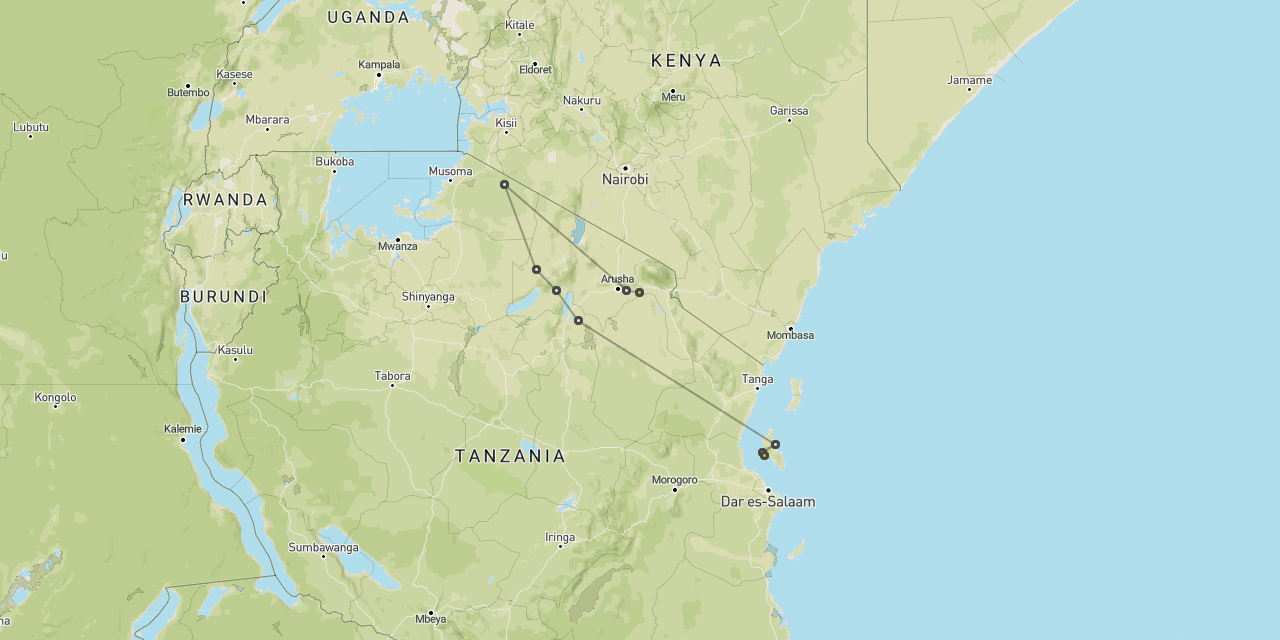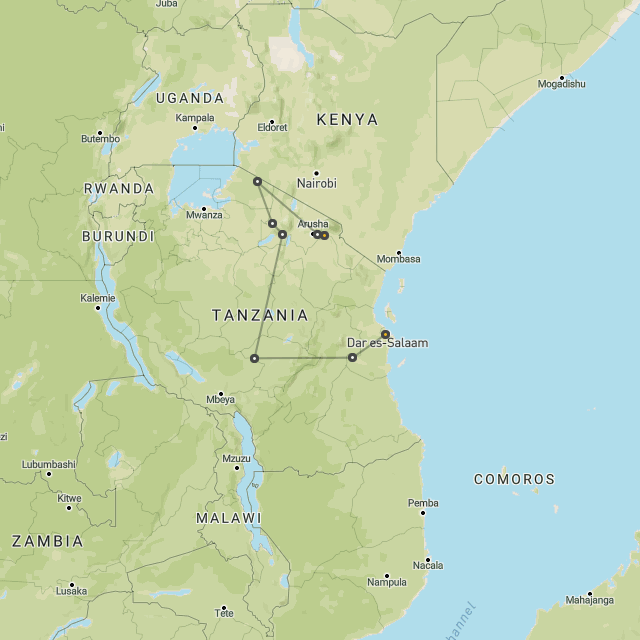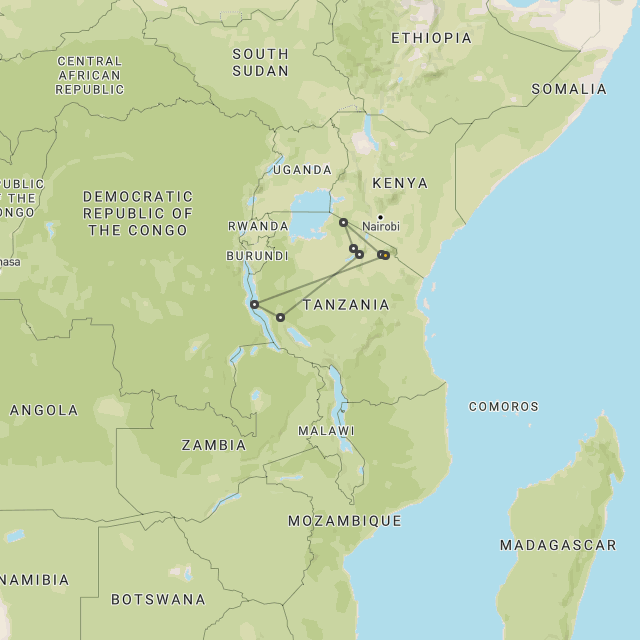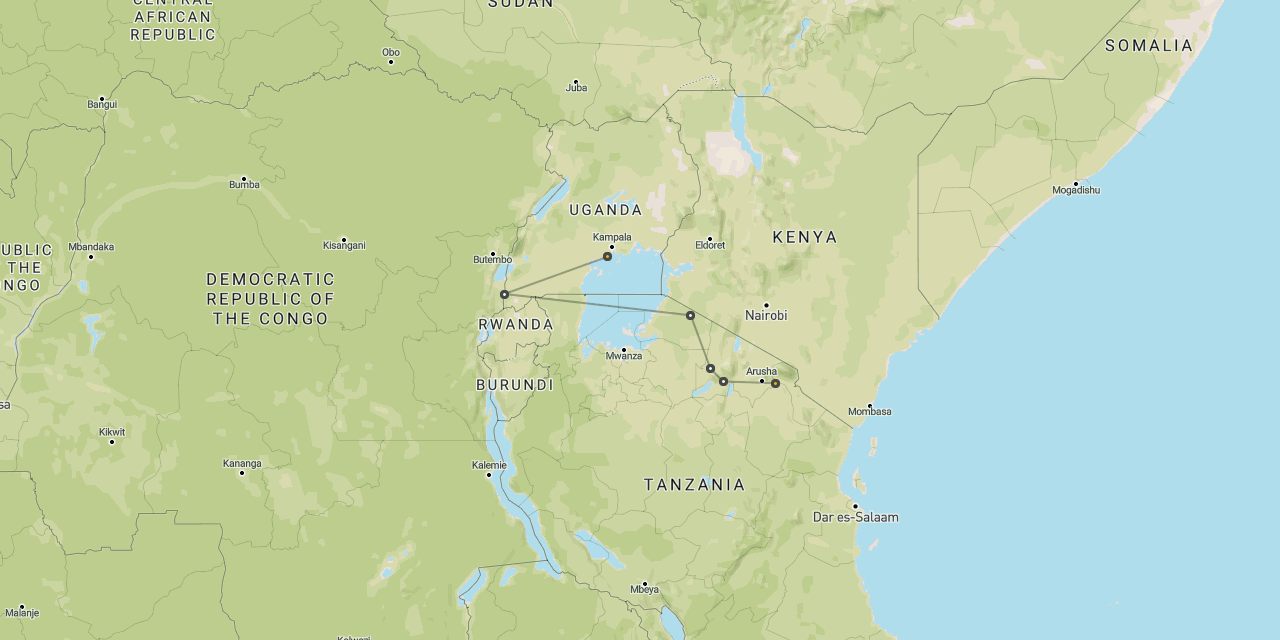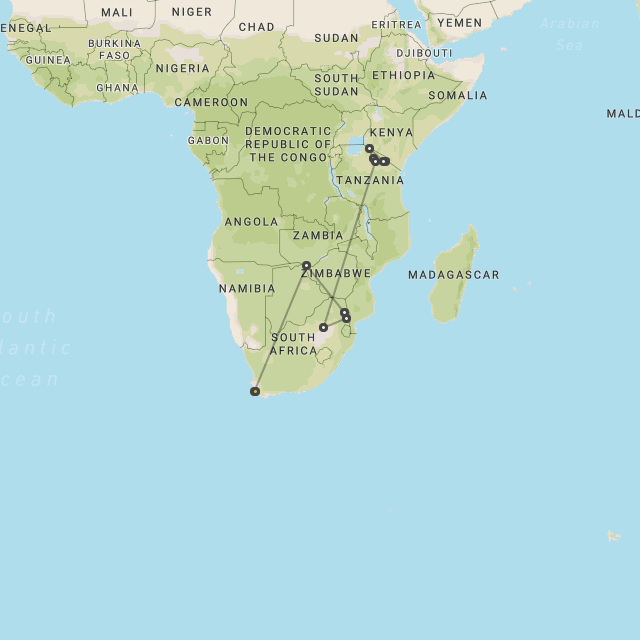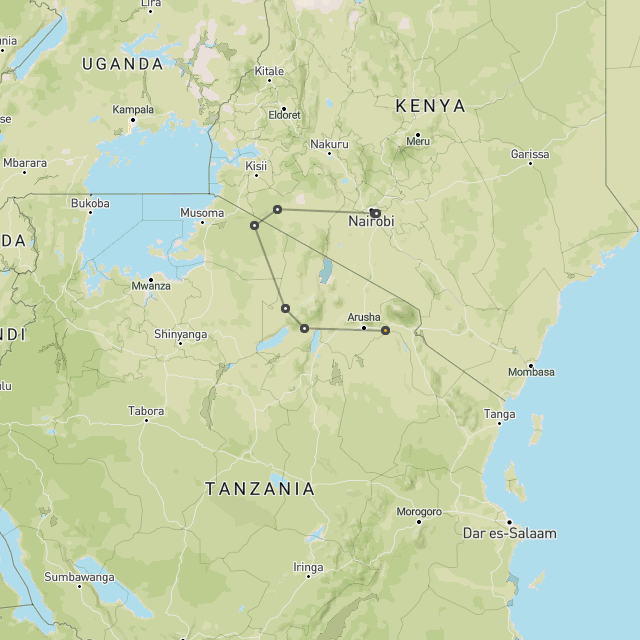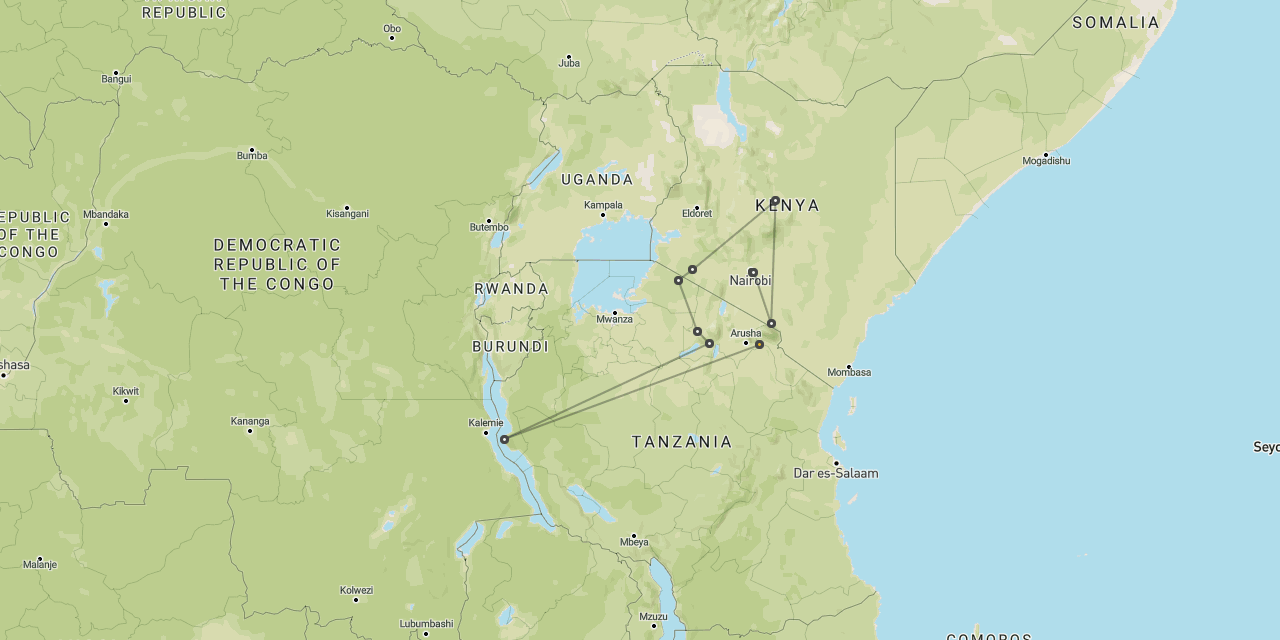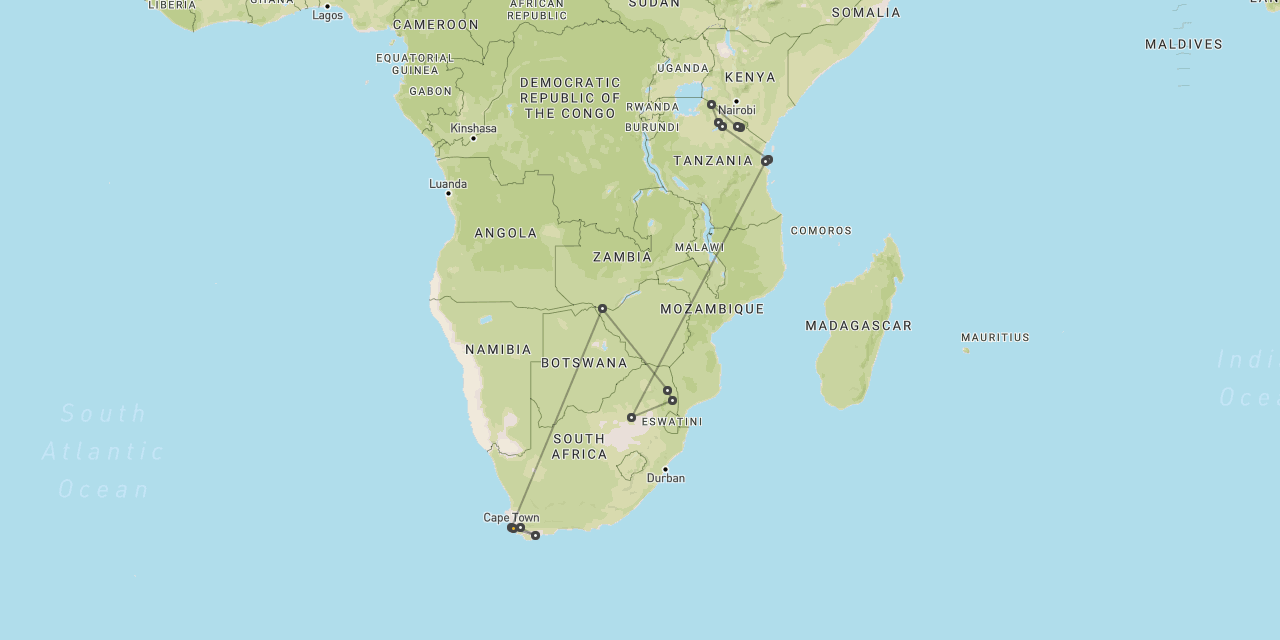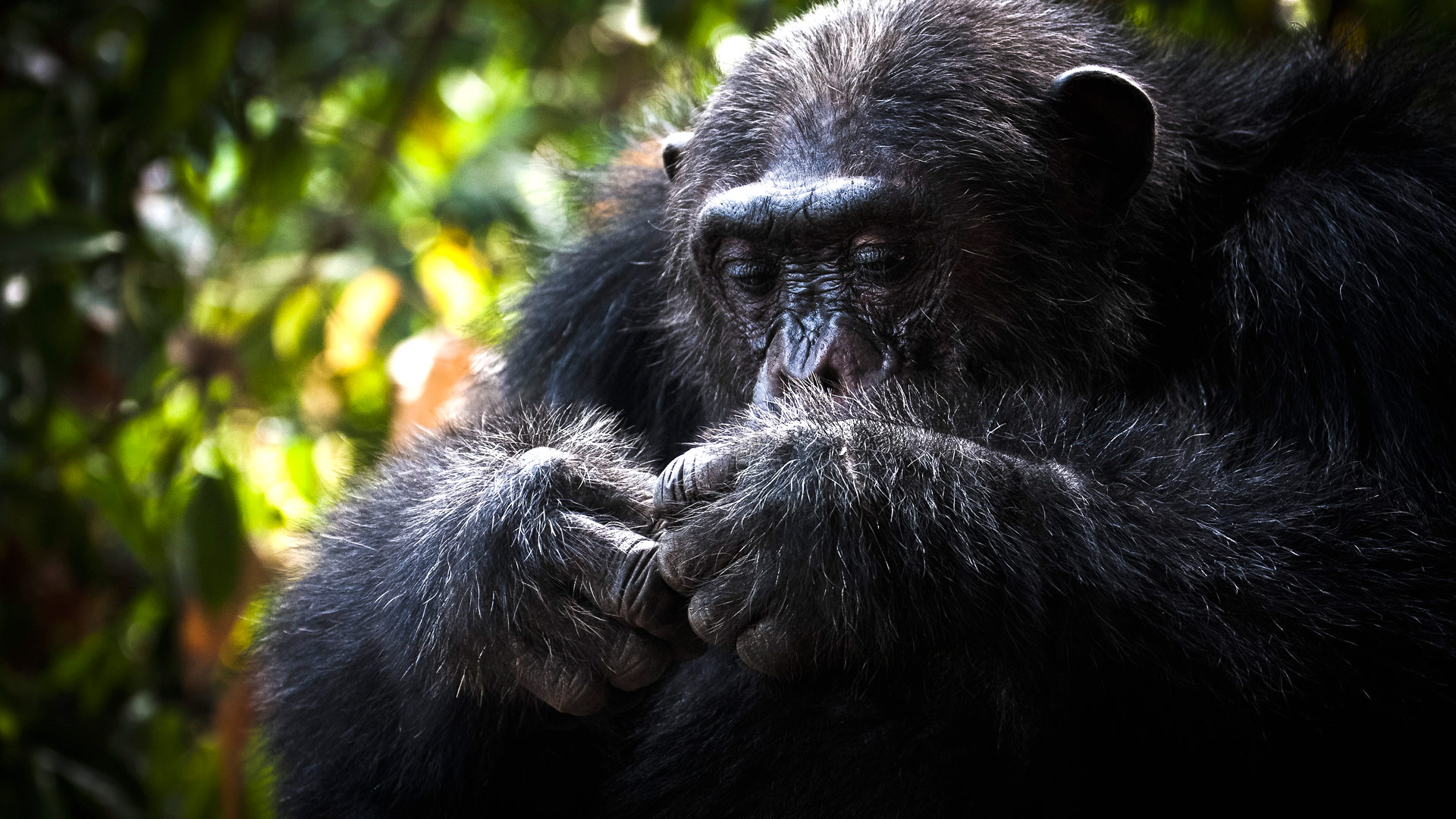
Safari to Mahale Mountains
Mahale Mountains
is an utterly magical location,
the best chimpanzee action in Africa
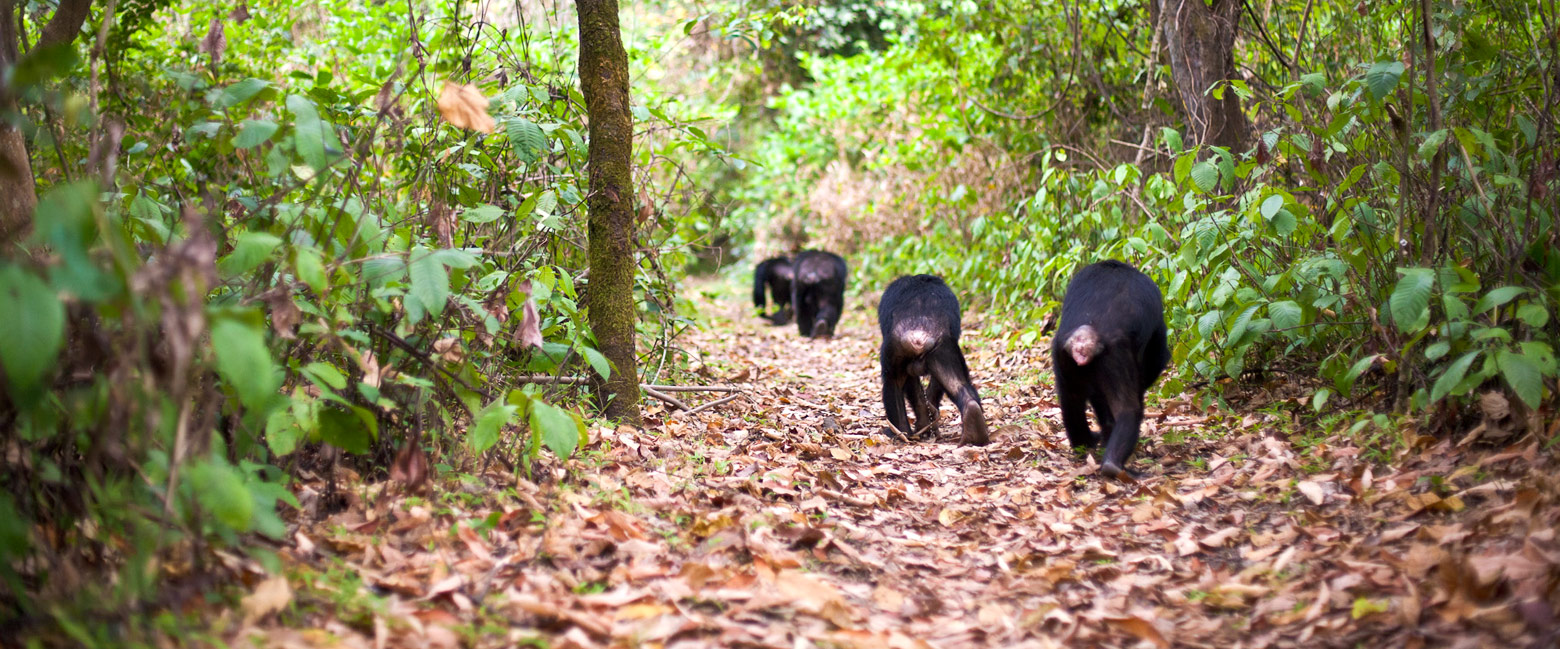
one of the most remote, beautiful and hypnotic reserves in Africa
Mahale Mountains National Park in Western Tanzania is the best place in Africa to see chimpanzees in the wild. In our opinion the experience here represents the finest wildlife interaction in the world.
This is a fabulously remote and beautiful national park, with gorgeous forested mountains, fabulous white-sand beaches and a truly remarkable lake, the second deepest in the world.
Thanks to its extreme remoteness, the reserve experiences extremely low visitor numbers, which definitely adds to the magic.
The reserve is home to a couple of really superb camps which, as well as the awesome chimpanzee experience, also offer other activities, including sailing and kayaking.
It’s not often you’ll find us raving so uncontrollably about a place, but the Mahale Mountains area really is incredible. A visit here is, quite literally, a life-punctuating event.
Unfortunately, including Mahale Mountains in a trip is unavoidably expensive, the costs of getting here alone are very significant. Also there is a minimum age of 12 years old for chimp trekking.
The reserve is most commonly visited in combination with either the northern reserves in the Serengeti region or the southern reserves of Katavi, Ruaha and Selous.
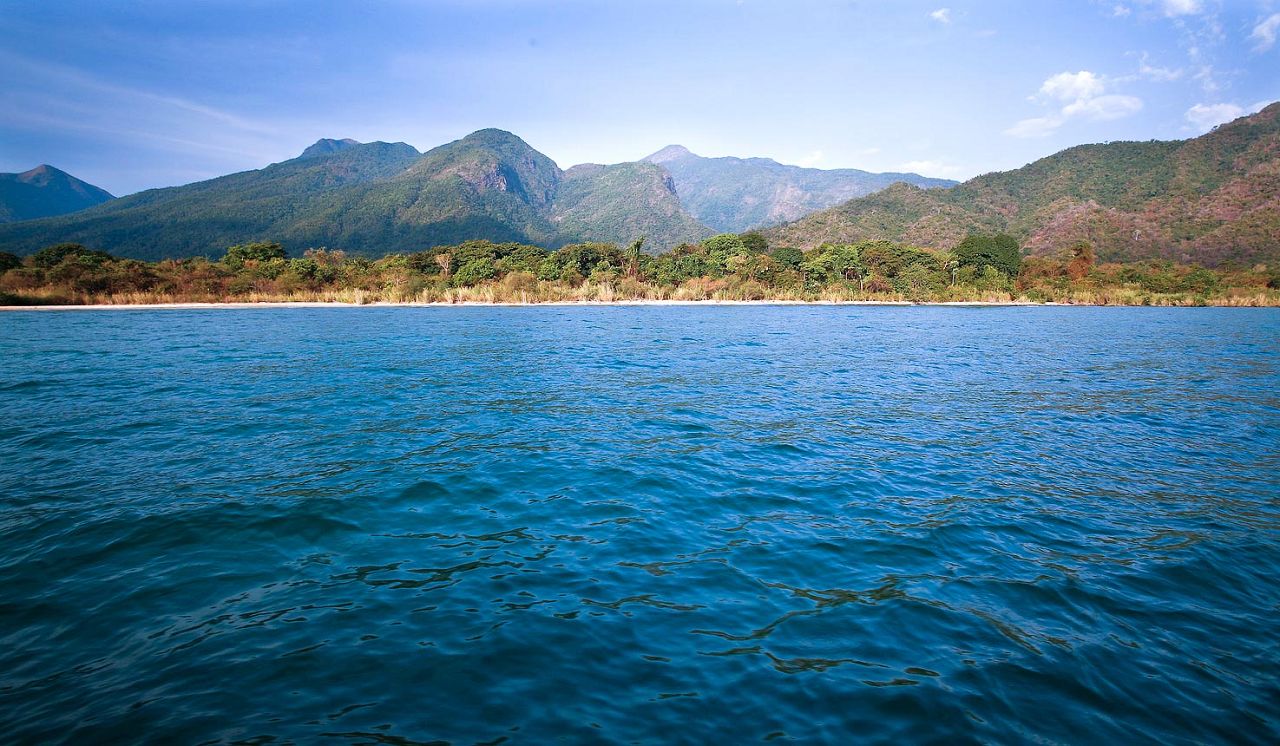
Gallery
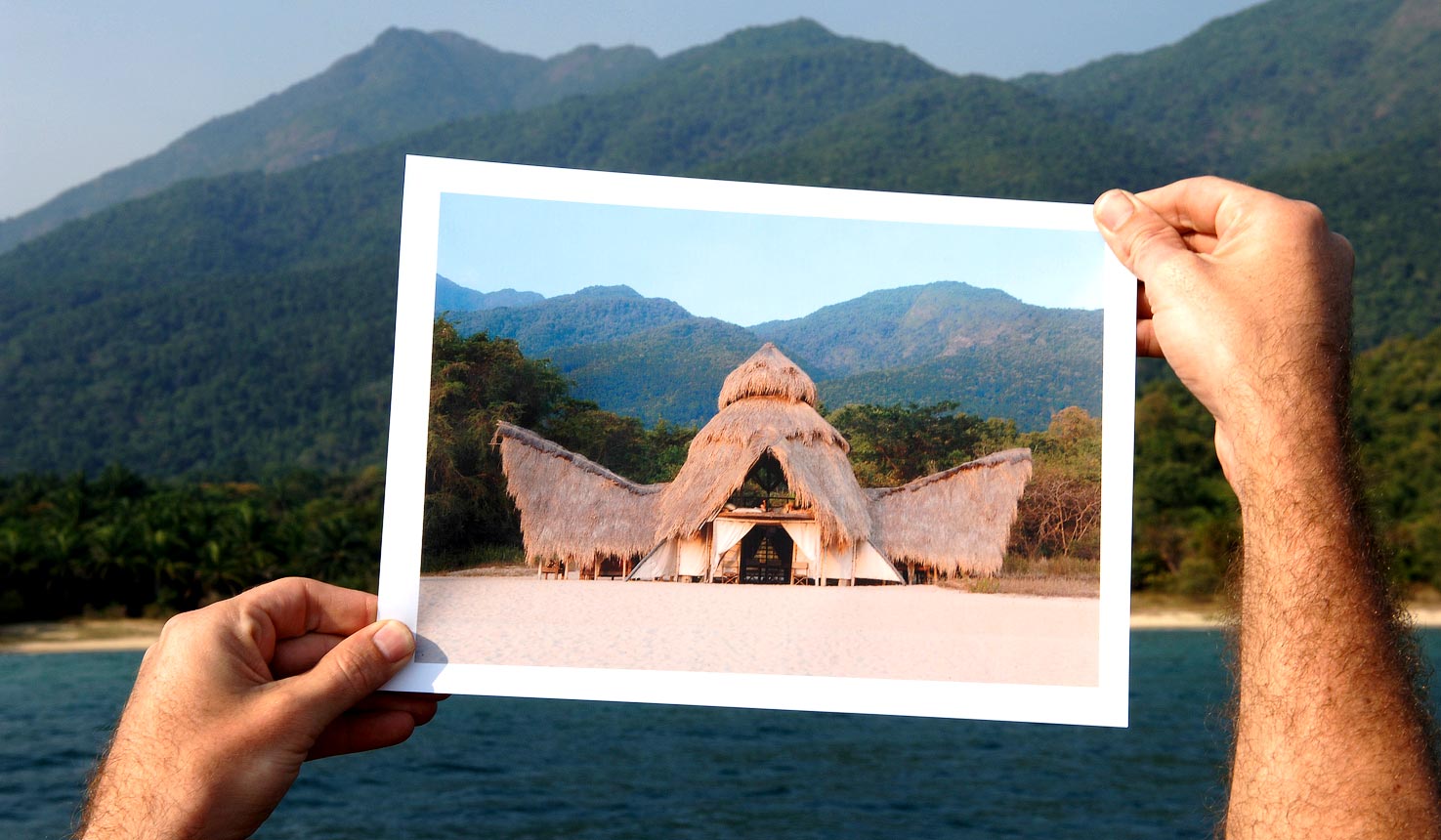
Video
Map
Mahale tends to feature in a disappointingly low proportion of trips to Tanzania. Although the allure and prestige of the location is well-established, this remains a costly place to visit in terms of both time and money.
The usual stay duration is 3-4 nights, depending on the flight schedules.
Seasonality
The most important aspect of a visit to Mahale Mountains, the actual chimpanzee viewing, is relatively reliable year round, but the weather and trekking conditions are definitely more favourable during the Jun-Oct dry season.
Dry season : Jun-Oct
The Jun-Oct dry season is the period which is conventionally considered to be the best time to visit Mahale Mountains, with reliably low rainfall and comfortable temperatures (although these can rise into October).
June should be considered something of a shoulder season, following on quite close after the rains. The camps are fully operational from the start of the month and general conditions should be pretty good. The only issue is that the chimps can be more difficult to find at this time as they go in search of fruiting trees higher up the slopes. This tends to be more pronounced during early June, but can continue right through to the middle of July.
Prime season is July to October, when the chimps tend to stick to the lower slopes along the lakeshore, even wandering into the camps from time to time, which should make for easier and more reliable sightings. In reality the situation is rather less predictable and the chimps can disappear over the hill for a while, but it’s very rare that they go out of range for long. With the weather being generally good, life in this part of the world is pretty good. Sailing on the lake, snorkelling, kayaking and just lying on the beach is a real pleasure. The only real issue is getting availability at the camps.
Green season : Nov-Mar
Throughout the preceding dry season, the rains tend not to fall away completely, but continue with intermittent light showers. But as October runs into November the rain can really start to become more persistent, although rarely to such an extent that it would ruin your trip. Chimp viewing tends to remain pretty reliable.
December, January and February carry on in the same vein, although with the risk of serious rains increases slightly as each month goes by, accompanied with the increased prospect of the chimps heading further afield and even going out of range for periods. Also, with the forest tracks becoming muddy and more difficult to traverse, this is definitely a period that suits more active guests.
The camps tend to remain open in March, largely to service visitors who are looking to combine with the great migration calving spectacle that is taking place in the Serengeti at this time. Conditions may not be ideal here, but a visit to Mahale even at this time remains pretty fabulous.
Rainy season : Apr-May
April represents the height of the rainy season and May continues to see the fallout from those events. All of the camps in the reserve usually close for the duration and air services from Serengeti are suspended.
Getting there
Mahale Mountains is most commonly accessed by the light aircraft services that come down from Arusha and Serengeti. It can also be reached from the south, via Ruaha and Katavi.
Once you have landed at the small airstrip just north of the reserve, your camp will collect you by motorboat for the 45 minute transfer down the lake.
It is also possible to access the reserve by a 3-4 hour motorboat transfer from the town of Kigali, further north on the lake. However getting to Kigoma is extremely difficult to do with any reliability, so we hardly ever use this route these days.
Once at Mahale, there are no roads or vehicles, so all activities take place either on foot or by boat.
Where to stay
Mahale Mountains contains just two high quality camps, the famous Greystoke Mahale (also known as Zoe’s Camp) and the slightly lower cost Mbali Mbali Mahale.
It is really important to note that these camps often need to be booked well in advance, even a year or more ahead of time if you want to stay in peak season or if you need two or more rooms.
There are also a few lower cost rooms at the national parks headquarters, which tend to be used by the few hardcore backpackers who manage to get this far.
a genuinely life-punctuating experience
let us know your thoughts about Tanzania
and we will help you create the perfect safari
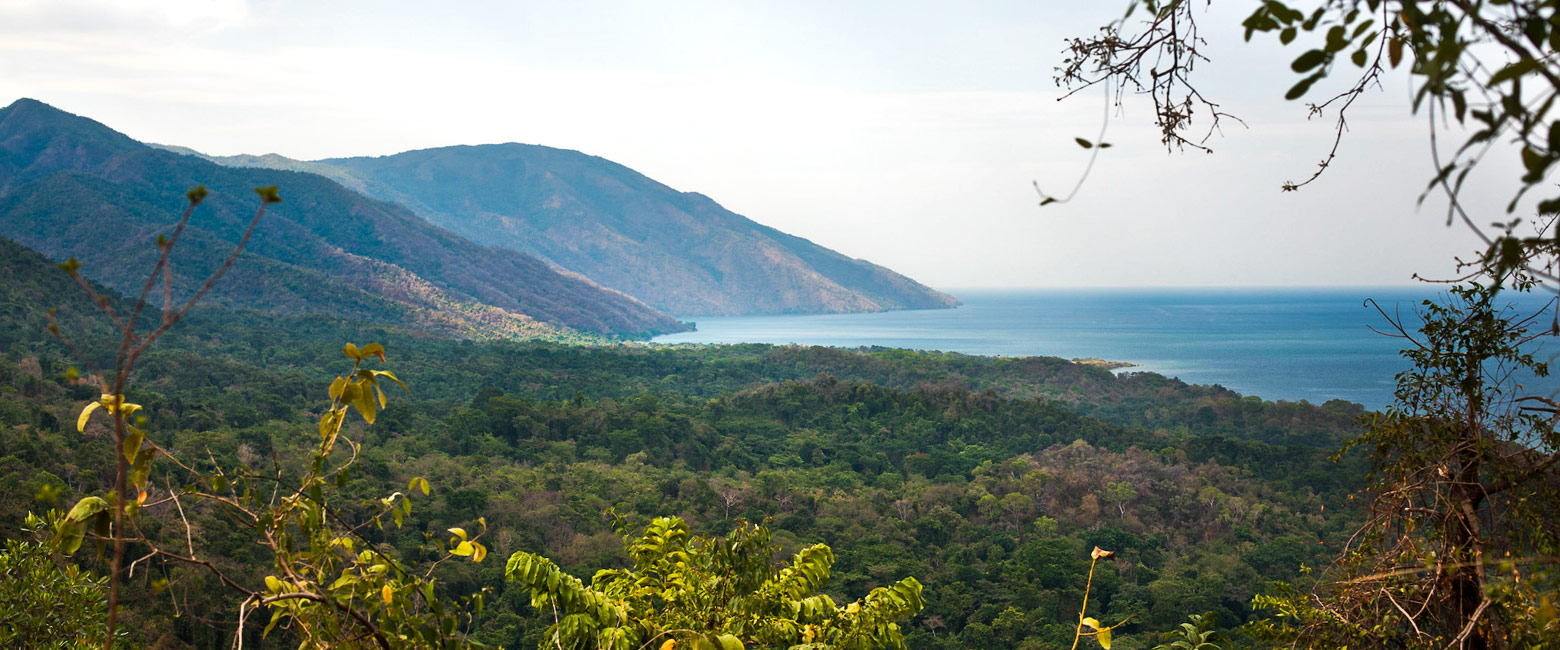
Extraordinary tailor-made adventures,
from earthy and edgy to easy and extravagant
From around USD 2500 per person, you set the ceiling
Sample Trips
Here are some of our popular trip shapes

Get started on your trip
It’s never too soon to get in touch, we are here to help with every stage of your planning.
Best Lodges
We regularly inspect and photograph all of the the best lodges, to ensure that we always recommend the most suitable options
Key Locations
Take a look around related locations. Click ‘View more’ to explore locations further afield.
Where Next?
Where Next?
We offer trips to dozens of fabulous countries.
Might one of these might be your next great adventure?

Please rotate your screen.
















